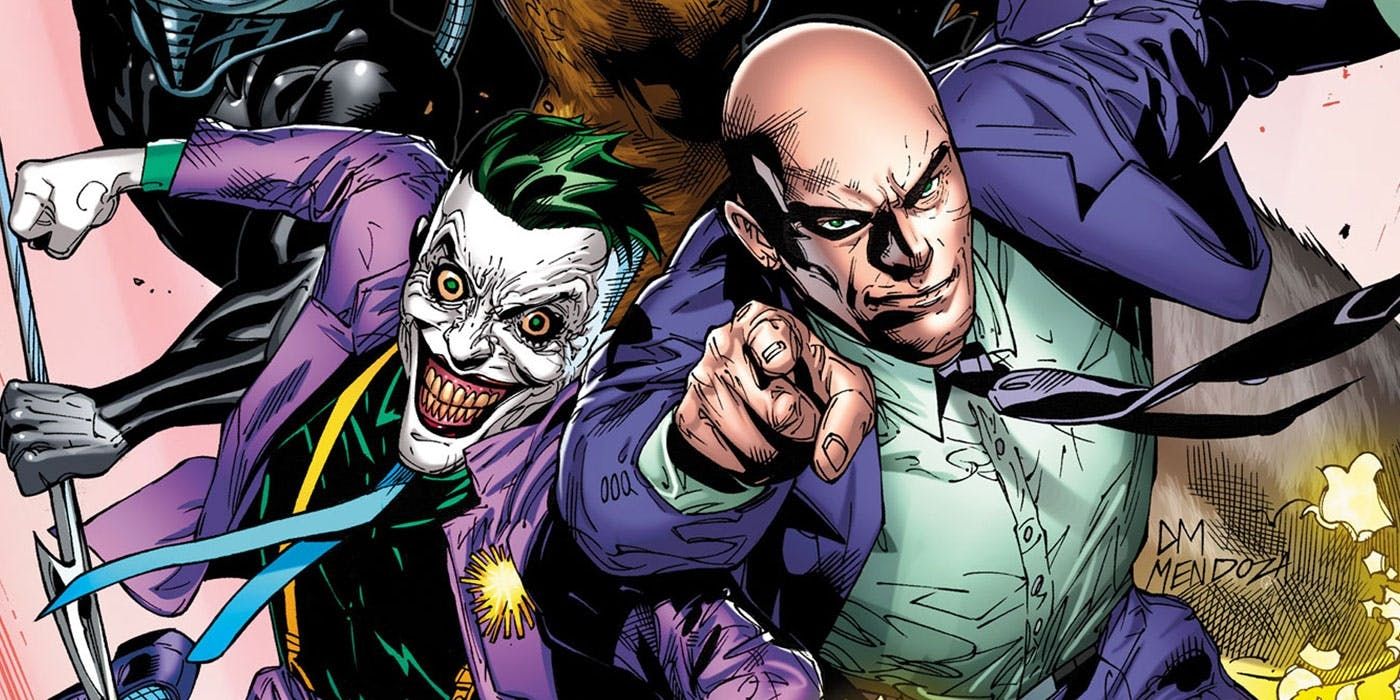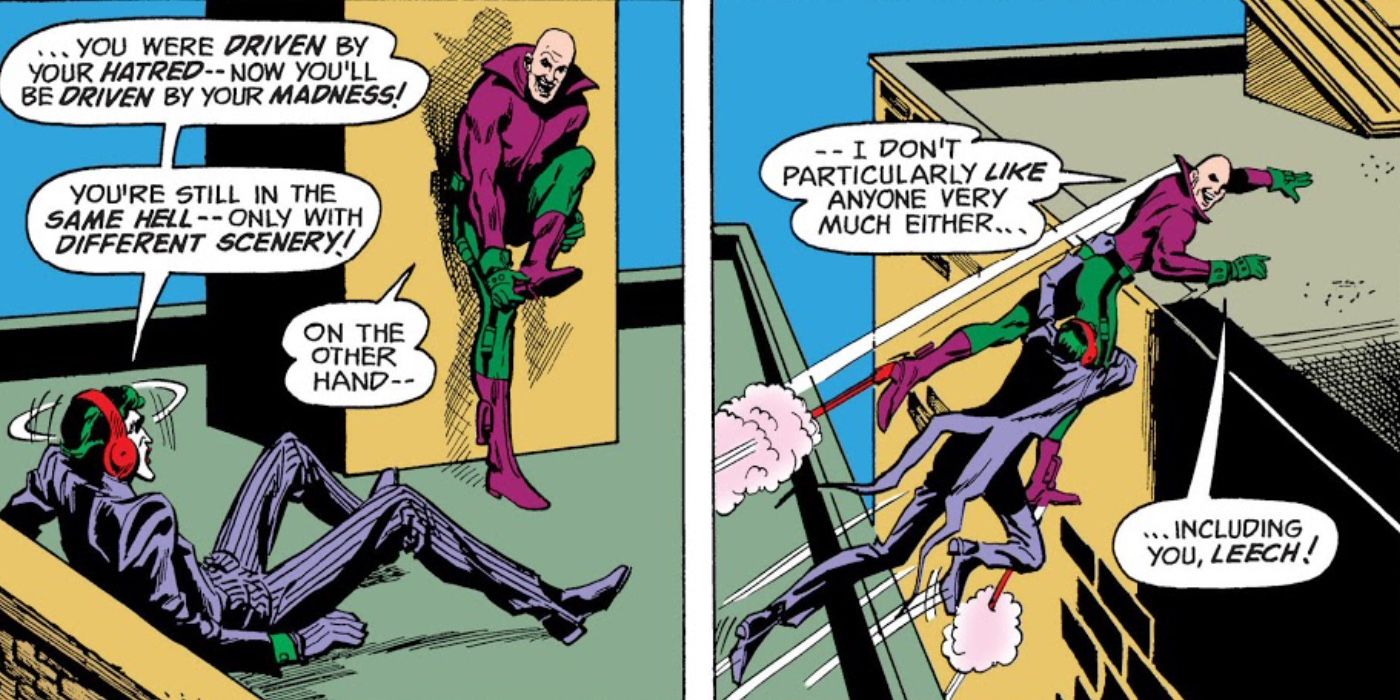On their own, the Joker and Lex Luthor are extremely dangerous villains, but when the two swapped abilities, Luthor became even deadlier. In 1976’s The Joker #7, the two temporarily switched brains—with deadly results. The story was written by the legendary Elliot S. Maggin, with art by Irv Novick and inks by Frank McLaughlin.
In the 1970’s, the Joker was given his own solo title. Each issue saw the Joker, from his lair called the Ha-Ha-Hacienda, team up, or fight, a different DC character; the Joker and the Scarecrow tangled, each using their respective toxin on the other and the Clown Prince of Crime even ran afoul of Sherlock Holmes. The series did not last long, only running for nine issues, but as the series was winding down, it was decided to pair the Joker, Batman’s greatest nemesis, with Lex Luthor—Superman’s greatest foe. The results were almost catastrophic, nearly killing both Joker and Luthor along the way.
As the story opens, both Luthor and the Joker have just broken out of prison, each unaware the other escaped. They randomly bump into each other at a movie theater and are quickly on the run from the law again. Luthor helps Joker escape but leaves the Joker behind when he returns to his headquarters. Later the next day, the Joker returns to Luthor’s base, just as he is testing a new device, designed to sap the willpower of Green Lantern Hal Jordan. The Joker bursts in, causing the experiment to go haywire, and instead of gaining Jordan’s willpower, Luthor gains the Joker’s madness—and the Joker Luthor’s genius. As a result, Luthor became more dangerous than ever. While still highly intelligent, Luthor’s crimes become more unhinged, with little rhyme or reason—much like the Joker. The Joker, on the other hand, was thinking clearer than he ever had before, and had to fake his trademark insanity when he was addressing his henchmen. He also learned that if he and Luthor did not go back to normal, both would die.
The Joker confronted Luthor, offering to put things right, but Luthor, now almost completely off the deep end, refuses, telling the Joker he likes the freedom he now has. The Joker, who had rigged a device to switch them back, overpowers Luthor and puts the device on him, restoring them to normal. As the issue ends, readers learn that, under the influence of the Joker’s madness, Luthor was on the verge of a theory that would explain the universe—but cannot remember it. The Joker, on the other hand, took advantage of Lex Luthor's genius and built a mini version of his hideout deep under his cell at Arkham!
While the results of Luthor’s brain swap were deadly, they were fascinating to watch as well. Luthor, a methodical and highly analytical character, was now free of any inhibitions that had been holding him back. His crimes were deadlier, taking on Joker-esque qualities—in one instance, Luthor, instead of robbing a museum of a precious giant diamond, destroys it instead. This was something Luthor never would have done before. In the end, the mind swap was going to kill Luthor and Joker both, and Luthor’s adamant refusal to go back shows just how unhinged he had become—Luthor normally has a self-preservation instinct. And readers in 1976 probably felt empathy for the Joker for the first time as he realized he was sacrificing his newfound stability to save himself, Lex and the citizens of Gotham.
The Joker and Lex Luthor have fought many times over the course of their careers, and watching their two personalities play off each other is a treat, but when they swapped minds, it made Luthor deadlier than ever.


